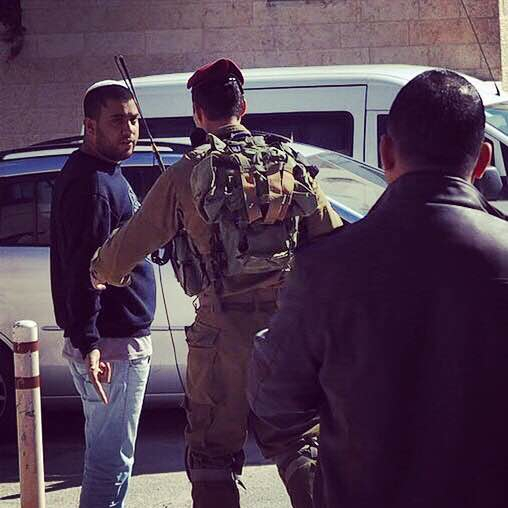Author: ISM Media
-
Armed settler invades schoolyard in Hebron
20th November 2014 | International Solidarity Movement, Khalil team | Hebron, Occupied Palestine Yesterday, at approximately 11:00 in al-Khalil (Hebron) a settler from a nearby illegal settlement approached the Qurtuba school in H2 with a gun [H2 is the area of Hebron under Israeli military civil and security control]. The settler entered the school grounds, terrifying the…
-
Two Palestinian youths arrested in Hebron
20th November 2014 | International Solidarity Movement, Khalil team | Hebron, Occupied Palestine Late yesterday afternoon in Hebron, Israeli forces arrested two Palestinian youths, 15-year-old Ahmed Alazeh and 21-year-old Dea’a Abu Dawoud. A local Palestinian contact reported to ISM that Alazeh was charged with throwing stones at soldiers, while Abu Dawoud was arrested after saying to soldiers at the…
-
Israeli forces fire 29 tear gas canisters towards youths and schoolchildren in Hebron
19th November 2014 | International Solidarity Movement, Khalil team | Hebron, Occupied Palestine This morning in al-Khalil (Hebron), clashes broke out in the Qeitun area starting between 07:00 and 08:00 near the Qeitun checkpoint. By 08:00 the group of Palestinian teenagers and young boys present had grown to approximately 100 individuals, since the school closed, most likely due to tear…



